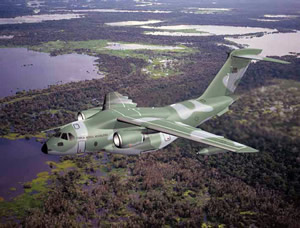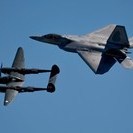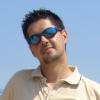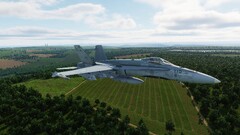- 0 replies
- 1,495 views
- Add Reply
- 0 replies
- 1,145 views
- Add Reply
- 0 replies
- 1,197 views
- Add Reply
- 0 replies
- 1,367 views
- Add Reply
- 7 replies
- 1,717 views
- Add Reply
- 0 replies
- 1,787 views
- Add Reply
Chilean Air Force Seeks To Buy Six Embraer Military Jets

By Erik,


Chilean Air Force Seeks To Buy Six Embraer Military Jets
The Wall Street Journal - 8/25/2010
SAO PAULO (Dow Jones)--Chile's Air Force is considering the acquisition of six KC-390 military cargo jets from Brazilian aircraft manufacturer Embraer (ERJ, EMBR3.BR), the company said Tuesday in a statement. In addition, the company said that Chile's Defense Ministry plans to help Embraer to develop the KC-390. Embraer is developing the KC-390 tactical transport for the Brazilian Air Force
Are you interested in participating at CombatACE?

By Erik,


Are you interested in participating at CombatACE?
CombatACE -- 22 August 2010 by Erik Thompson
We are currently looking for a few good people who are interested in participating as news staff editors to help us out with creating, referencing, and posting our daily news.
I'm aware there are many more relevant and interesting topics we should report on not to mention the interest of our own content which is why we are looking for participants. If you share the passion and interest in r
West Point ranked high in Forbes picks for best colleges

By Erik,


West Point ranked high in Forbes picks for best colleges
Defense Talk — By Agence France-Presse on August 20, 2010 at 2:05 am
WEST POINT, N.Y.: A report released Aug. 11 by Forbes ranked the U.S. Military Academy at West Point fourth in the country in their annual ranking of America's Best Colleges.
"West Point is again honored and pleased to be selected as one of America's top five best colleges. It is a testament to the hard work and dedication of our exceptional cadets,
Halo: Reach getting matchmaking in its campaign mode

By Erik,


Halo: Reach getting matchmaking in its campaign mode
Destructoid -- 22 August 2010 by Matthew Razak
Here's some good news for all of you out there who hated the fact that you couldn't just hop into a game of Halo 3's campaign through a matchmaking system. Halo: Reach will indeed have matchmaking for its single-player. This means that instead of only being able to charge through the campaign with your friends you can charge through it with anyone.
My plan? Find someone ridiculousl
SAAB Unveils Thai Air Defence Solutions

By Erik,


SAAB Unveils Thai Air Defence Solutions
Air Force News — By Saab on August 19, 2010 at 1:49 am
At a ceremony at Saab’s factory in Linköping today, Saab unveiled the Thai integrated air defence system for its Thai customer. The ceremony was held to celebrate the contract between Sweden and Thailand.
Many prominent guests attended the event including Commander in Chief, ACM Itthaporn Subhawong from the Royal Thai Air force, Gunnar Holmgen, General Director for the Swedish Defence M
Intelligence experts analyse 'North Korean fighter jet crash'

By Erik,


An image posted on the internet by a Chinese citizen allegedly shows a North Korean aircraft that went down in Liaoning Province, China Photo: EPA
Intelligence experts analyse 'North Korean fighter jet crash'
By Peter Foster, Beijing
Intelligence experts are analysing reports that a North Korean fighter jet crash-landed in northern-eastern China on Tuesday afternoon, leading to speculation of a failed defection attempt by the plane’s pilot.
Photographs of the crash site











